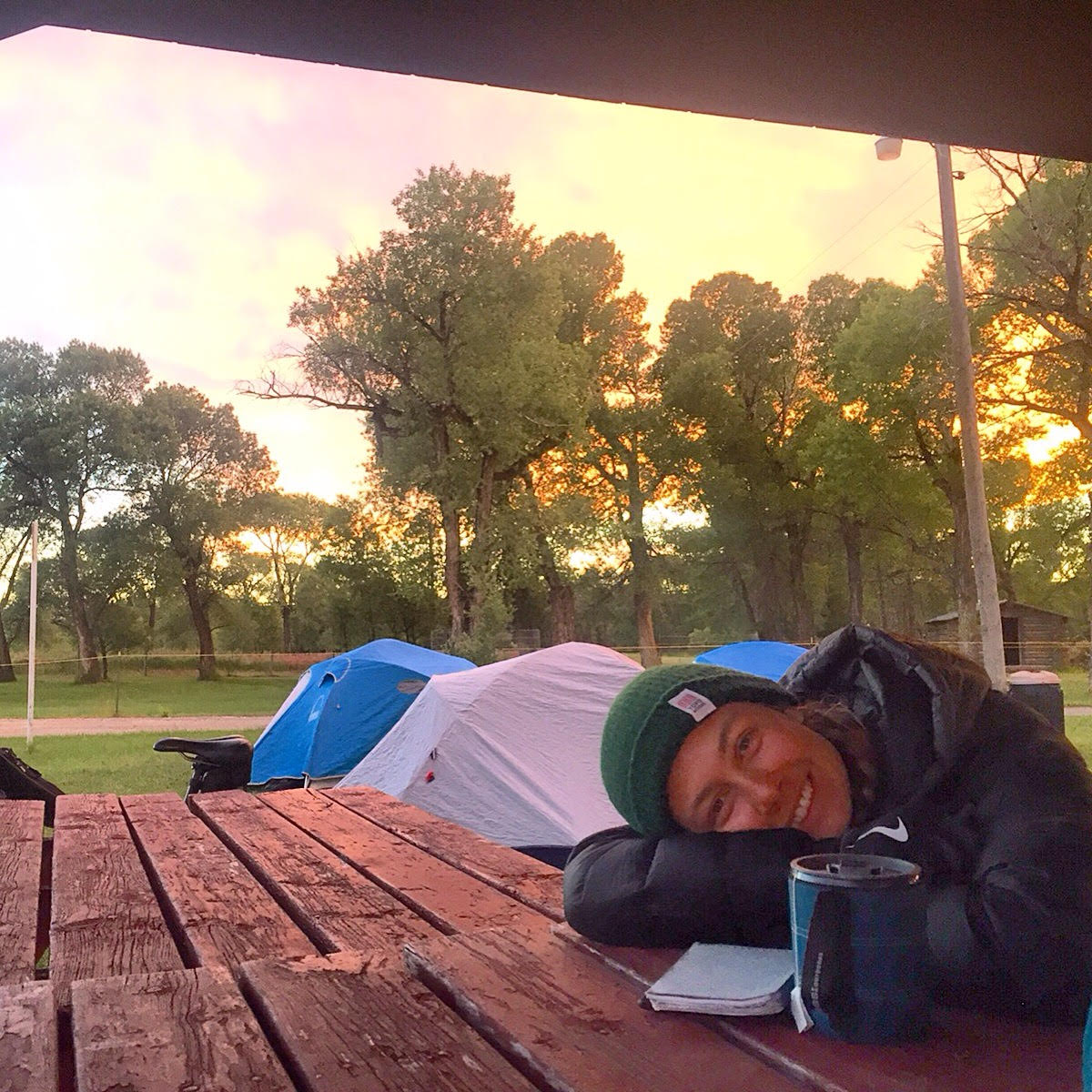
The American way is innovation. Lightbulbs, modern democracy, telegraphs, the postal service – the U.S. spirit of progress has plastered the nation’s history. And in many ways, the American West finds itself at the forefront of today’s innovative spirit, rooted in the longstanding values of frontier, exploration and a departure from the everyday.
Swap Edison for Bezos, the Pony Express for Gmail, and you’ll most likely find yourself somewhere along the central to northern California coast: Silicon Valley. You might end up also in L.A., Portland, or Seattle. These startup hubs are leading the way to an easier and cleaner future. So why then, in a class about climate change and renewable energy, do we find ourselves between mile marker 125 and 126 along highway 12 wolfing down couscous and showering for the first time in a week? It’s because there’s a whole other American innovator who doesn’t sip $6 lattes or check Twitter more than they go outside (regrettably, I often fall into the former category). Out here, off the busy interstates and narrow shoulders, along ranchland that calls to mind a Thomas Hart Benton piece, sprawling widely across the horizon, there’s a crop of people who are living and breathing the spirit of American innovation.
On this trip we have met and been hosted by a variety of people who believe in rural risk taking, and disobeying status quos. We met ranchers and landowners who have passive solar homes, like Steve Charter and Jean Wallace, coal miners whose work powers parts of South Korea and Japan. The miners feed their families and take part in the community of their workplace. We met Hutterites using top-of-the-line farming technology and we met climate activists in the small Montana towns. Everywhere we looked, innovation felt inherent in our conversations – new ways to burn coal, homes that didn’t need the grid anymore, renewable energy fairs in the 1970s that helped jumpstart the early environmental movement.
We arrived at Steve Charter’s ranch on a day that felt like the sun was just a little too close to our shoulders. We washed our hands in his sink and set up camp around back. Starting our grilled cheese feast, he and his friend John took the time to talk to us about Steve’s ranchland and the sustainable farming methods they had been incorporating into their soil process.
Then, Steve told us about the early days. He spoke about the 1970’s and forming the Northern Plains Resource Council, an organization that fights coal and allies ranchers to lobby the legislature. Being a rancher on land that has mineable coal is no easy task, and often it takes a level of innovation and trust in self-reliance to fight the battle.
In 1980 Steve and his wife Jeanne built a passive solar home. Almost everyone told them it was impossible. No YouTube videos or Google searches to aid in the process – just a couple of library books and strong will.
It’s hard to be an innovator, Steve explained to me as we sat on different portions of a sawed up tree trunk overlooking a sloping grassland below. The innovator takes the risk and often doesn’t reap the financial reward, but they’ve paved a path. Steve has paved many paths. He’s in the process of setting up a vermiculture business toward more fertile soil, and has led a life against coal companies and land degradation, in hopes of making a more sustainable world for his grandchildren who live just up the hill.
This trip changes how the brain works. The constant cycling, waking up with the sun, and shifting worries from career and grades to effective Shotblock rationing and how best to care for extreme heat rash has left me a lot of time for reflection. Over the last 9 or so days, I’ve tried to spend time thinking about the type of journalist I want to be, and less about the type of career I need to have. I’ve become less future-oriented. I’ve stopped monitoring every move for maximal hiring potential. Instead, I’m finding myself living minute to minute. And I’m enjoying it.
I’m surprised by how intrigued I am by rural and small-town America. I love the phenomenon of innovation in a place that can get slogged into a singular category of old and dated in a national narrative. As I continue to reflect, I find that I am drawn to these places.
It’s easy to get caught up in fads as a storyteller. The Tesla-driving entrepreneurs of my generation are on the future’s forefront. They’re my friends. They create helpful apps, love the outdoors and big cities. They’re all over the science and tech section of every major newspaper and magazine. Young people living in major cities seem to be creating a bigger, better and more sustainable tomorrow at every moment. But for me, true storytelling will deviate from these narratives.
This trip is a lesson in view finding. When everyone else seems to be flocking to a shiny gadget or app, I’ll be taking a detour off the major highway and onto a dirt road far from a Starbucks or Apple store, with shorter lines and quieter alleys. The best stories of American innovation sometimes happen where everyone seems to be overlooking. While I might not be able to hitch onto a bike and send it to rural Montana for every story, I’ll take the lessons I’ve learned from the pace and space of this trip long into my career.
P.S. if anyone reading this hears about job openings for bike-bound journalists, give me a call.